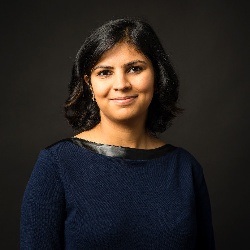 |
Page History
| Excerpt |
|---|
Definite diagnosis of cancer presence or recurrence is currently only possible via invasive biopsy or surgical intervention. Unfortunately, invasive biopsy, (a) in many cases is unnecessary due to absence of the disease, (b) have sampling errors depending on where the tissue sample is acquired from, and (c) could have irreparable and life-threatening side effects including mortality. Recently, artificial intelligence and radiomics have shown tremendous promise in leveraging imaging to non-invasively capture the landscape of tissue heterogeneity, previously not feasible by visual inspection. Similarly, one would leverage -omics and pathology information in conjunction with routine imaging to establish cross-scale associations towards designing more optimized personalized treatment options for cancer treatment. In this talk, I will focus on my lab’s recent efforts in developing radiomic (extracting computerized sub-visual features from radiologic imaging), radio-genomic (identifying radiologic features associated with molecular phenotypes), and radio-pathomic (radiologic features associated with pathologic phenotypes) techniques to capture insights into the underlying tumor biology as observed on non-invasive routine imaging. I will focus on clinical applications of this work for predicting disease outcome, recurrence, progression and response to therapy specifically in the context of brain tumors. I will also discuss our current efforts in developing new radiomic features for post-treatment evaluation and predicting response to chemo-radiation treatment. I will conclude with a discussion on our recent findings in AI + experts, in the context of a clinically challenging problem of distinguishing benign radiation effects from tumor recurrence on routine MRI scans. |
...
